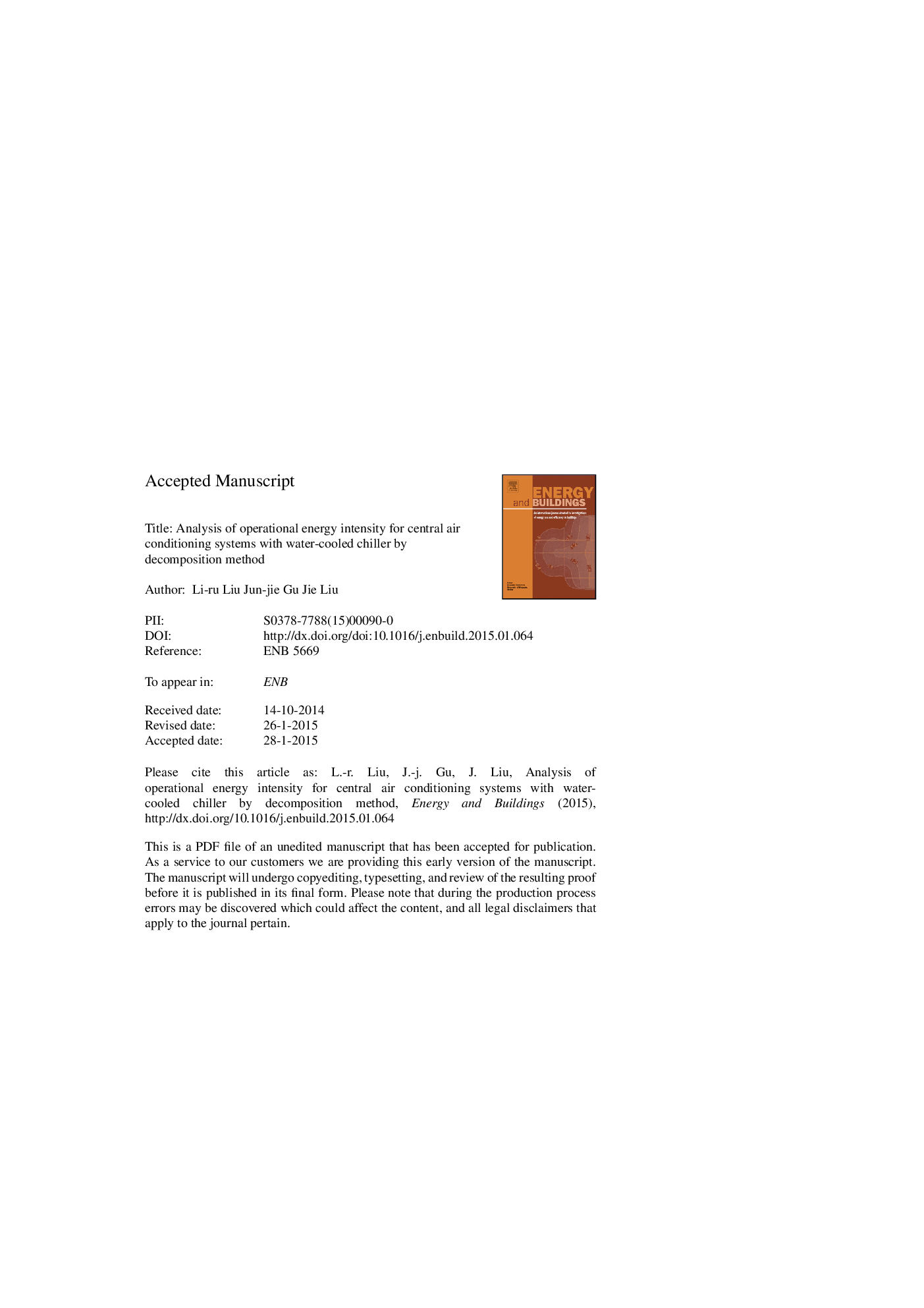| Article ID | Journal | Published Year | Pages | File Type |
|---|---|---|---|---|
| 6731862 | Energy and Buildings | 2015 | 21 Pages |
Abstract
Due to the complexity and diversity of energy conversions in HVAC systems, this paper is focused on the central air conditioning systems with water-cooled chiller and its operational energy consumption. Through analyzing the energy flows of the five consecutive loops which extract energy from the conditioned spaces and rejects it to the environment, the global energy intensity index is first to be put forwarded and then the decomposition method which analyzes the influence of the specific consumption (e) and delivered fluid ratios (p) on global energy intensity is proposed. The important conclusion drawn from this method is that it is necessary to decrease both the specific consumption and delivered fluid ratios of the main energy users in order to decrease the global energy intensity of HVAC system. Finally, the global energy intensity of central air conditioning system of a twenty six-story office building in Guangzhou, China in design and real condition is compared and analyzed by e-p decomposition method as a case study.
Keywords
Related Topics
Physical Sciences and Engineering
Energy
Renewable Energy, Sustainability and the Environment
Authors
Li-ru Liu, Jun-jie Gu, Jie Liu,
